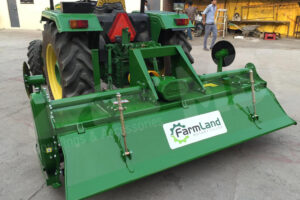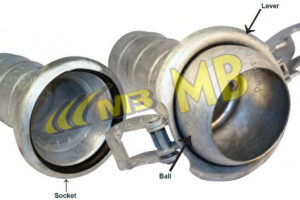The importance of pumps in fluid transmission in any business cannot be emphasized. When it comes to industrial pumping, two major players stand out: centrifugal and positive displacement pumps. These two pump types have distinct advantages in terms of efficiency, flow rates, viscosity handling, and pressure capabilities. In this blog, we will dissect the differences between centrifugal and positive displacement pumps, providing you with the knowledge you need to choose the best pump types for your individual needs.
What Is A Centrifugal Pump?
A centrifugal dewatering pump uses rotational energy generated by a motor or engine to transfer fluids. The fluid enters the pump’s impeller across the rotating axis, where it is pushed by the spinning impeller toward a scroll or diffuser. When fluids travel through the impeller, they gain velocity and pressure.
Our Centrifugal Process Pumps are popular industrial and home hydraulic pumps. These pumps’ high-quality impellers generate a tremendous centrifugal force, providing an enormous thrust to push liquids through the pipes. Our centrifugal pumps excel in a variety of applications, including drip irrigation and the processing of volatile and abrasive chemicals.
What Are The Benefits Of Centrifugal Pumps?
Centrifugal pumps are among the most common types of pumps used in industrial settings. And they offer numerous advantages that make them popular choices. These are some examples.
Simplistic design – Because centrifugal pumps are basic in design, they can be less expensive than other types of pumps.
Fewer moving components – A simpler design implies fewer moving parts to fail and maintain over the pump’s life.
Centrifugal pumps are available in several shapes and sizes, making them suitable for a wide range of applications and even when space is limited.
What Is A Positive Displacement Pump?
A positive displacement pump transports fluids by trapping a portion of the fluid and forcing it into a discharge pipe. Two or three spindles moving in opposite directions create the function of pumping, trapping, and displacing the liquid. There are several types of positive displacement pumps, including the following.
Rotary positive displacement pumps create a vacuum by rotating a device that pulls in and traps fluid. Gear, screw, vane, peristaltic, rotary lobe, and progressive cavity pumps are common examples. Progressive cavity pumps are used to transport very viscous fluids or those containing solids, such as dirt, grit, or sludge, in difficult applications.
One or more oscillating pistons, plungers, or diaphragms are used in reciprocating positive displacement pumps. The fluid’s motion is restricted to the correct direction via valves. Reciprocating positive displacement pumps are commonly employed in applications requiring low flow rates against high resistance. Some may be used to transport viscous and heavy fluids like sludge and slurry. When pumping toxic or hazardous substances, diaphragm valves are frequently used.
Linear positive displacement pumps have been used to draw water for ages throughout the world. Rope pumps and chain pumps are two examples.
What Are The Benefits Of Positive Displacement Pumps?
Viscosities — Positive displacement pumps can handle a wide range of viscosities.
Various pressures – This type of pump can handle higher pressures and flows without sacrificing capacity.
Consistent flow – A positive displacement pump can keep its flow and speed consistent.
Sealing is not required — These pumps are not required to be completely sealed.
Differences Between Pump Types: Centrifugal Pumps And Positive Displacement Pumps
Both centrifugal and positive displacement pumps move fluids from one point to another. But there are quite a few differences between the two.
Mechanics
The major distinction between centrifugal and positive displacement pumps is in their mechanics. Centrifugal pumps, as previously stated, transmit velocity to the liquid, resulting in pressure at the exit.
A specific amount of liquid is trapped within the pump and sent to the discharge port by PD pumps. To summarize, centrifugal pumps generate pressure, which causes flow. Positive displacement pumps generate pressure by creating a flow.
Performance
Because centrifugal pumps produce flow as a result of pressure, you may alter the flow rate by adjusting the pressure. Because positive displacement pumps function in the opposite direction, they will provide continuous flow even with variable pressure.
The flow of both types of pumps can be controlled by adjusting the speed. With positive displacement pumps, the flow rate is proportional to the pump speed. You can control the functioning of centrifugal pumps without using pump throttling or liquid treatment.
Viscosity
As the viscosity of the material being pushed increases, centrifugal pumps become less efficient. This is due to frictional losses within the pump. As a result, these pumps are often not suitable for highly viscous fluids (more than 850 cSt). Positive displacement pumps, on the other hand, become more efficient as the pressure increases.
Inlet Conditions
To generate a pressure differential, liquids must be contained within a centrifugal pump. This is also required because the pump cannot self-prime and cannot deliver a GVF greater than 15%. Positive displacement pumps, on the other hand, generate negative pressure at the inlet port. The pump must be filled with liquid once, but it is self-priming and capable of handling massive amounts of gas.
Shearing
The high-speed motor used in centrifugal pumps can generate liquid shearing, which is undesirable in some applications. Positive displacement pumps produce little shear because of their low internal velocity, making them more suitable for shear-sensitive materials.
Suction Lift
Suction lift cannot be produced by standard centrifugal pumps. However, where this is possible, self-priming designs are available. A vacuum is formed on the inlet side of positive displacement pumps, allowing for suction lift.
Efficiency
Centrifugal pumps achieve efficiency peaks at specific pressures, and any changes have a significant impact on pump efficiency. Pump cavitation and damage might occur if the efficiency curve is not in the middle. Positive displacement pumps’ efficiency is less affected by pressure. These pumps can be operated at any point along their curve with no loss of efficiency or damage.
When To Use Centrifugal Pumps
Centrifugal pumps are ideal for moving thin liquids with low viscosity. This comprises thin fuels and oils, as well as several chemicals and water. They are often employed in large-volume pump applications where high flow rates at low pressures are required. The following are some common applications for these pumps.
Municipal water supply systems
Irrigation
Firefighting
Water circulators and air conditioners
Fuel for boilers
Transfer stations for light fuel
Towers for cooling
When To Use Positive Displacement Pumps
Positive displacement pumps are ideal for pumping viscous fluids at high pressures and low flow rates, such as oil, paint, and glue. Positive displacement pumps are commonly found in the following situations.
Centres for oil processing
Sewerage systems in cities
Operations in manufacturing that process or generate thick or viscous materials
Food and beverage manufacturing facilities
Pharmaceutical plants
Each positive displacement pump has distinct properties that make it appropriate for specific applications. Lobe pumps, for example, have minimal shear and are simple to clean and sterilize, making them excellent for pharmaceutical and food processing. Diaphragm pumps, on the other hand, are self-priming and built for low flows and high pressures, making them ideal for metering or distributing oil and corrosive liquids.
Complex facilities, such as manufacturing and food processing industries, sometimes benefit from a combination of the two types of pumps. A food processing factory, for example, may require a centrifugal pump to add water to its systems and a positive displacement pump to transport thicker ingredients.
Quality Industrial Pumps And Services From MB Exports
Find out how MB Exports may assist your company whether it requires a centrifugal pump or a positive displacement pump. MB Exports, a well-known participant in the pump business, provides a wide selection of high-quality pumps designed to meet the needs of various industrial sectors. Our products are a tribute to engineering brilliance and uncompromising integrity, and they are supported by extensive warranties and world-class support. MB Exports, the best dewatering pump manufacturer in Australia is ready to move your operations forward by meeting your centrifugal and positive displacement pumping needs.
Read more about Choosing the Best Pump Manufacturer and Supplier for Your Business.




